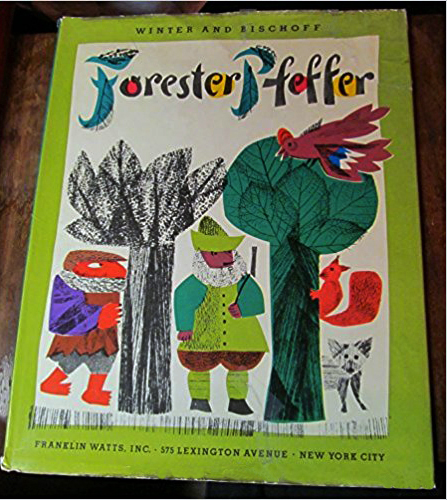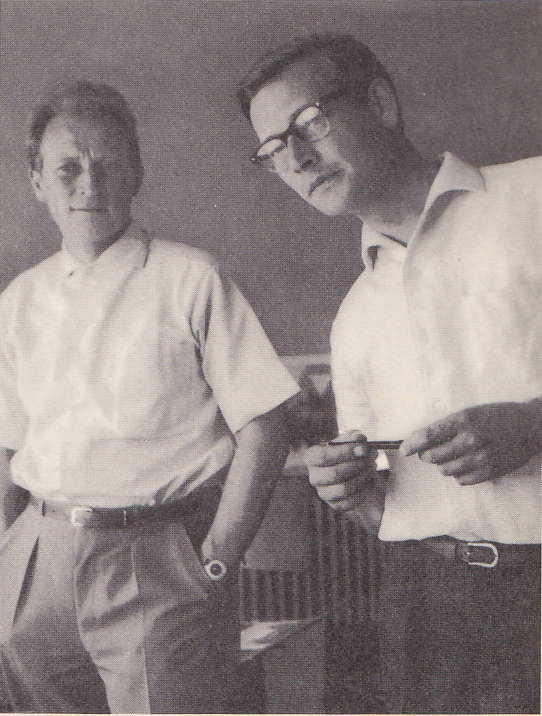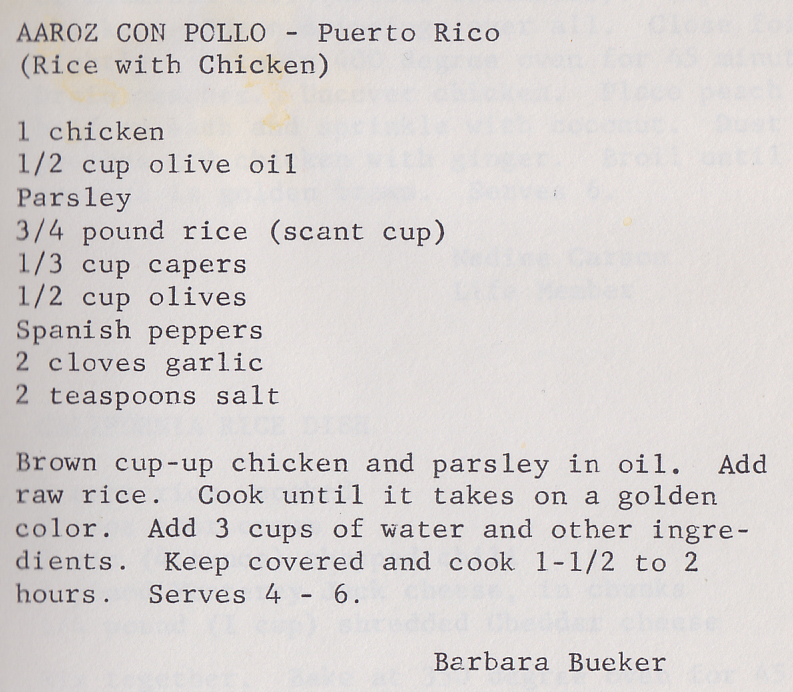|
Page A6 / The Joan
De Arc Crusader / Sunday, April 1, 2018
Front Page A1 /
Editorials A2 /
50th Birthday A3 /
Best of Crusader A4
/ Interview A5 /
Crossword A7

Book review:
Forester Pfeffer
By J. Bueker
Easter on Joan De Arc Avenue never generated quite the levels of
fervid excitement for  us kids as Halloween and certainly not Christmas, and
yet we always regarded Easter as a supremely important holiday nevertheless. us kids as Halloween and certainly not Christmas, and
yet we always regarded Easter as a supremely important holiday nevertheless.
Carl Bueker’s legendary Easter basket hunts were a big reason why.
These cleverly orchestrated events were enduringly memorable and
genuinely poetic in nature. The activity entailed a series of
cryptic verses posted by Father as clues in various improbable
locations around 3219. One note led to another and then the next
until the four baskets were finally recovered in some ridiculously
ingenious nook in the house, wedged behind the washer
and dryer or some such. We have all long lamented the sad fact than none of
Carl’s handwritten Easter hunt clues was preserved for posterity.
On one of our earliest Joan De Arc Easters, after the basket hunt had
reached its conclusion, my mother surprised me with a bonus Easter gift
alongside my basketful of sugary bunnies. Already an avowed bibliophile, I
was delighted to receive a curious little volume entitled
Forester Pfeffer, a lovely little
children’s tale of a sociopathic gun-toting criminal stalking innocent
wildlife in an idyllic forest setting.
Published in 1960, Pfeffer was
the brainchild of a pair of German designers and illustrators by the names
of Helmut Bischoff and Klaus Winter. Their story is a simple German folk
tale of good vs. evil translated into English by one H.D. Hüsch, but the
book is primarily a showcase for the simple yet compellingly intricate
illustrations and design implemented by Bischoff and Winter.
The text presents a concise and surprisingly disturbing tale for a cute
little kid’s book (spoiler alert). Pfeffer the intrepid forester is
interrupted by the sounds of gunshot rippling through the woods as he
attempts to enjoy his steaming bowl of chicken noodle soup. Accompanied by
faithful canine Flippen, the hero sets out from his humble red cottage to
find the culprit and bring him to justice. After soliticing the animals in
the forest for assistance in his quest (and oddly enough, various plants as
well), Pfeffer ultimately manages to entrap the wicked hunter and deliver him
into appropriate incarceration. The brave forester then retires to his
little red cottage and reheats his bowl of soup. The end.

Bischoff and Winter, circa 1960 |
Well
then. I can only observe that children’s literature has changed somewhat
since 1960. The disturbingly violent content of
Forester Pfeffer raises the
contemporary eyebrow and would be difficult to imagine in a 2018 children’s
story. As the tale approaches its climax, the young reader is presented with
the heart-rending image of a young deer bleeding from a gunshot wound. The
fact that all this mayhem is situated in a warm and fuzzy fairy-tale forest
setting lends a somewhat surreal flavor to the proceedings. I think it’s
fair to say that Pfeffer is a
period piece that certainly owes something to its post-WWII German vintage.
If you peek beneath its childlike storybook veneer, the tale of Pfeffer also
presents certain moral ambiguities that would probably never occur to a
young reader and indeed may not have crossed the minds of Bischoff and
Winter either. The “wicked” hunter may well be killing animals as a simple
necessity of his own survival, although we’ll never know since his purpose
is never made explicit in the narrative. He may indeed be a gun-wielding
madman who must be stopped at all costs by the intrepid forester, but it’s
really impossible to tell. Perhaps this is by design.
Despite the more disturbing aspects of the tale,
Forester Pfeffer remains a
charming little slice of kid’s lit, thanks primarily to its remarkable
illustrations. The simple drawings are flat and two-dimensional, but they
blend to create a very dynamic imagery through a remarkable use of color and
the depiction of a striking variety of wildlife and plant life that combine
to evoke a very complex and compelling forest setting. Bischoff and Winter
were not great artists, but their talent for design carries the day.
I am happy to report that my original copy of
Forester Pfeffer rests today on
my library shelf alongside a second copy of the book that my brother and his
wife thoughtfully gifted me some years ago, a very solid copy with its dust
cover happily intact. Although I memorized the text long ago, I still page
through the book on occasion and marvel at this unique example of
mid-century kiddie melodrama. And fondly recall a certain Easter Sunday long
ago.
Bischoff and Winter went on to produce
several more children’s books as the ‘60s unfolded, most notably
’The King and Parrot’ and Other
Fables in 1969. One imagines the pair would be pleased indeed to know
their work had such a profound impact on the early cultural history of Joan
De Arc Avenue.

The
exquisite Arroz con Pollo
By J. Bueker
The timeless combination of chicken with rice has always appealed to
me. My favorite meal at the legendary Phoenix riverboat restaurant Copper Belle,
indeed the only repast I can ever remember ordering there, was their
splendid Southern Chicken Skillet, a savory concoction of chicken, seasoned
rice, green peas, mushrooms and country gravy. Here was comfort food par
excellence.
I was therefore already quite the devoted chicken ‘n rice aficionado
when my mother introduced her amazing Arroz con Pollo recipe to 3219 in the
late 1960s. This unique and distinctively flavored Caribbean dish was a
starkly different culinary experience from the traditional southern-style
cuisine served up at the Belle.
Many variations of Arroz con Pollo exist of course, but this
particular version from Puerto Rico has something of magic about it. Capers,
olives, and Spanish peppers combine with the chicken and rice to produce an
absolutely singular texture and flavor. I’ve never tasted anything remotely
like it before or since. Happily for me, my wife also enjoys this classic
Joan De Arc dish and prepares it for us on an ongoing basis.
The
story of Arroz con Pollo’s journey to the Avenue actually begins in the late
‘50s, when Life magazine published a “Foods of the World” cookbook that Mom
purchased as a gift for her sister Virginia. My aunt apparently tried the
Arroz recipe, enjoyed it immensely, and enthusiastically recommended it to
Barbara, who then brought it to the Bueker dinner table.
A year or two later, when asked to contribute a recipe to
the “Culinary Capers” cookbook being assembled for her AdeA women’s club,
Mother knew just the one she wanted to share. The recipe as shown here is taken
directly from that 1969 AdeA cookbook. ¡Buen apetito!

________________________________________________________________________________________________________
JDA
Front Page A1 /
Editorials A2 /
50th Birthday A3 /
Best of Crusader A4
/ Interview A5 /
Crossword A7
|

 us kids as Halloween and certainly not Christmas, and
yet we always regarded Easter as a supremely important holiday nevertheless.
us kids as Halloween and certainly not Christmas, and
yet we always regarded Easter as a supremely important holiday nevertheless.

